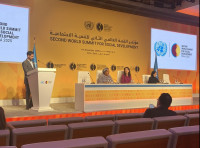Opinion
Higher education in crisis
Pedagogy and course delivery techniques invariably are at least two decades old
Achyut Wagle
Nepal’s deepening economic woes and political perils can be attributed to the poorly managed education system, higher education to be specific, and its persistently pathetic outcomes. Global research during the last several decades has almost unequivocally established that there is a strong correlation and causality between underdevelopment and educational outcomes. When technical higher education fails to instil skills required for gainful employment, and humanities studies become unable to augment individuals’ critical judgment by transforming them from ‘brutes’ into ‘humans’, the economy cannot produce, and democracy becomes dysfunctional. Instead, drafting youths for political regimentation of all sorts and for taking up arms and creating an unquestioning, subservient support base becomes easier. It barely matters whether the initial pull is indoctrination, desperation or compulsion. Our own recent history is a bold witness to all this.
Foreign employment data shows that in 1996, the year the Maoists launched the so-called People’s War, only 3,605 youths registered to migrate abroad for work. When the war was at its peak a decade later, adolescents and youths who could afford to escaped the war, either for work or education. Those who were left behind fell prey to drafting to fight on the side of the guerrillas. Now, according to several estimates, the absentee working age population is at least 4 million. It includes those youths from relatively well-to-do families who migrate for self-paid higher education. Departures now cross the 100,000 mark annually. The twin reasons are: lack of quality education and post-education employment opportunities in Nepal.
Both types of outmigration of the active-age population have unleashed a ratchet of multifaceted ominous ramifications in the country’s political economy. The ‘political’ outfits that seek to thrive on violence, like the Nepal Communist Party (Biplov), CK Raut’s Alliance for Independent Madhesh or other smaller armed groups still tactfully bank on these, in essence, semi-literate, vulnerable and unemployed youths who have no means to leave the country. The education system of Nepal has put them in such a no-option trap.
Academic environment
The academic environment in higher education (since we are not discussing school here) is precarious, to say the least. There are nine universities in the country. Except for Tribhuvan University and Kathmandu University, all of them, more often than not, are on strike, locked up or mired in one or the other form of scandal surrounding academic irregularity or financial embezzlement.
The quality is an ubiquitous concern across disciplines and institutions. For example, the bachelor or master’s degree awarded by any of these institutions is not recognised as instant equivalent in any of institutions of average global repute. Ironically, these universities have now, on the one hand, become wholesalers of affiliations to private colleges and, on the other, ‘factories’ to produce PhD ‘scholars’ en masse. On both counts, the rigor and quality of academic attainment has been the main victims.
The causes leading to the present situation of despair and hopelessness are many and often very chronic. To mention a few, pedagogy and course delivery techniques invariably are at least two decades old in a majority of subject disciplines. The absence of qualified faculties is one of the key and excruciating problems. The so-called well-established universities like Tribhuvan and Kathmandu are extremely averse to inducting new, particularly foreign educated, talents. The existing underperforming faculties are overtaken by a strong sense of insecurity or humiliation if better qualified persons enter their ‘free paradise’. The culture of academic research is close to nil across the spectrum. Nepal lacks even a single internationally listed (let alone ranked) journal in any field of academic research.
The private colleges—despite their substantive amount of investment, infrastructure, high fees charged to students and fair scope of academic excellence—are severely constrained from performing better primarily due to their mandatory compliance with sub-standard syllabuses and, generally, under-qualified teachers. Absolute lawlessness in determining the teachers’ pecuniary compensation in the short run and career path in the long run is another big disincentive for them to perform. Teachers who teach only in a private institution for any length of time remain only a ‘lecturer’ as there is no legal basis for them to be promoted to associate or full professorship. At the outset, there is no attraction for better trained and qualified persons to join academia. A few who dare to venture out face fierce resistance from diehard status quoists among the existing ‘insiders’.
Reform prospects
True reform in Nepal’s higher education looks increasingly challenging. There are three outstanding bottlenecks that need to be cleared even before any kind of reform can even begin. First, the political leadership must understand and acknowledge the depth and extent of reform imperatives. The political leadership is either unable to understand the gravity of such a need or is often willing to shirk its responsibilities with some darn approaches. Second, the roadmap of reform must come from forward-looking experts, not form status quoists and outdated dead wood. A recent report from the committee formed by the government is a classic example of this malaise. Third, the dichotomy in the mindset in executing reform as the ‘policymaker’ against the ‘policy user’ must be erased. This situation is an outcome of the bitter reality that no offspring of persons assigned to steer any degree of reform in higher education is impacted by the changes since they are already in or bound for good foreign universities. In this way, every reform initiative has been ‘stake-free’ and, thus, suboptimal in outcome. A similar lack of ownership and confusion is evident in the ongoing process of drafting an umbrella act meant for universities.
Only three bold and honest endeavours look plausible for transforming Nepal’s higher education. One, the government, expectedly the federal one, can put political weight and resources to establish a flagship world class public university, at least in the technological and humanities streams, which, in due course, can obtain instant global equivalence of the degrees it awards. This also suits the present, supposedly, socialism-oriented government. Second, market-like freedom can be granted to private colleges to choose pedagogy, course books and lesson delivery mechanisms while maintaining only administrative affiliation with the university concerned. This will end the completely board-exam orientated teaching-learning environment. Three, a multi-university concept under a level-playing field but with an effective regulatory mechanism focused mainly on quality insurance will lead to competition-induced quality in the long run, as they must strive to deliver the best to survive in the market. Unfortunately, none of these reform momentums now seems to be moving in the direction at a desired pace.
Wagle tweets at @DrAchyutWagle




 22.12°C Kathmandu
22.12°C Kathmandu










